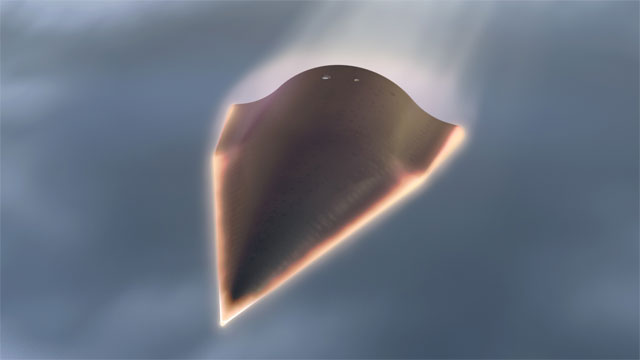A couple of days ago we had a story regarding the Mach 20 Missile developed by DARPA that was supposed to be able to to attack any terrorist member within one hour after launch. This was supposed to be Darpa’s second and last chance to send this rocket out. Unfortunately, it failed again.
The first time that this missile was launched sometime last year, it crashed into the ocean about 9 minutes after launch. Apparently, during the flight of the missile it began to detect inconsistencies in the flying pattern, and the missiles on board security system helped it glide down into the ocean.
This time, the missile flew for about 36 seconds and then, the Air Force lost contact with the Missile and they were unable to locate it’s position again. Apparently they incorporated a self destruct mode onto the missile in case anything went wrong, but they haven’t tweeted or pinged anything about it yet.
So here is what happened, earlier today, the Falcon HTV 2 launched from California on top of a Minotaur IV Lite rocket. The rocket pushed out to outer space and after separating from the Minotaur IV, the Falcon came back into the atmosphere using a Reaction Control System. Once inside the atmosphere, the control system helped the missile fly in the upper area of the atmosphere, passing to the pull up phase which puts the falcon in the correct altitude for a gliding phase. During this phase, the falcon was supposed to start flying at Mach 20. At that speed, the falcon was being heated by up to 3,500 degrees before DARPA controllers lost telemetry contact and they never re-connected with the craft.
According to Air Force Major Chris Schultz, “We know how to boost the aircraft to near space. We know how to insert the aircraft into atmospheric hypersonic flight. We do not yet know how to achieve the desired control during the aerodynamic phase of flight. It’s vexing; I’m confident there is a solution. We have to find it.”
According to Schulz, three technical challenges exist within this HTV-2 flight regime. They are categorized as aerodynamic; aerothermal; and guidance, navigation and control. And each phase of flight introduces unique obstacles within these areas.
“To address these obstacles, DARPA has assembled a team of experts that will analyze the flight data collected during today’s test flight, expanding our technical understanding of this incredibly harsh flight regime,” explained Schulz. “As today’s flight indicates, high-Mach flight in the atmosphere is virtually uncharted territory. ”
So it looks like they have a whole bunch of work cut out ahead of them, lets hope they can figure something out asap. The mere thought of having a missile that flies at Mach 20 is amazing!



